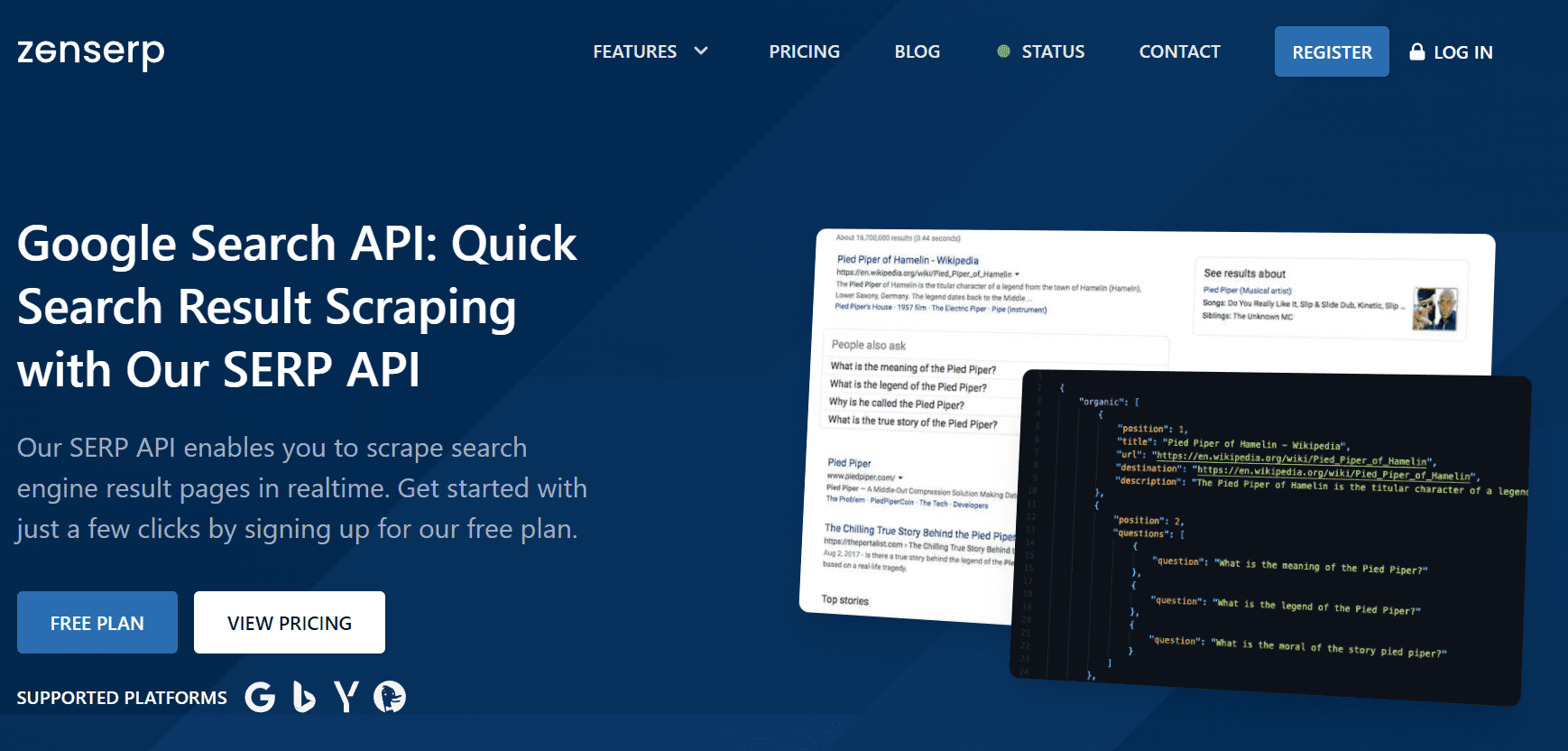Google News is a news aggregator and curation service developed by Google. It is a powerful tool that allows users to access the latest global or local news easily. For this reason, many applications have been fed by Google News data lately. When apps want to get Google News content quickly and effortlessly, Google News Search API comes up. Today, there are a lot of Google News API services that provide Google News content.
A good Google News API should provide Google News results as quickly as possible. It should provide historical news as well as breaking news. In this article, we will get to know the zenserp API, which is the most preferred Google News API today, and integrate it into the Python programming language.
Table of Contents
What should a Good Google News API be Like?
Comprehensive Coverage: A good Google News API should provide access to a wide range of news sources and topics, including local, national, and international news outlets, to ensure that users have access to diverse perspectives on current events.
Reliability: It should provide accurate and up-to-date news data, and should prioritize the most reliable sources to ensure that users have access to high-quality news.
Easy to Use: Search results should return in the most common formats such as JSON, XML, and CSV.
Insightful Data: Providing detailed data is another responsibility. It should include financial times news, popular articles, publisher details of the article, the publication’s web portal URL, and SEO keywords on the article.
Customizable: Allow developers to specify various parameters when making requests, such as the search query, location, language, and date range, to fine-tune their search and retrieve the most relevant data.
Scalability: It should be able to handle a large number of requests, permit to send of search queries, and should support pagination to allow developers to retrieve large amounts of data in smaller chunks.
Security: It should have proper security measures in place to protect user data and prevent unauthorized access.
Best Google News Search API: zenserp API

The zenserp API is a web scraping API that allows users to access data from search engines and other websites. There are many services provided by the zenserp API and Google News API service is one of them. It also offers many services such as Google Image API, Google Video API, Bing News Search API, and Yandex Search API.
It has been developed to quickly scrape real-time news data of the platform’s data. It also provides historical data on Google News.
Additionally, the API provides a simple, easy-to-use interface that allows developers to access the data they need with minimal coding effort. The API also allows users to specify various parameters when making requests, such as the search query, location, language, and date range. This allows users to fine-tune their search and retrieve the most relevant data.
The simple API that zenserp provides offers easy integration into popular programming languages such as JavaScript, Python, Java, and C#. It returns JSON format, which is the most common return format.
The API provides comprehensive documentation. This documentation includes step-by-step tutorials and code samples on how developers can integrate with popular programming languages.
How to Integrate the zenserp API with Python?
Although this API is generally preferred for commercial purposes, there are many non-commercial use cases today.
We are going to integrate the zenserp API Python programming language, which is the most popular API, to obtain Google News content, and after this step, you will be able to easily use this API for the purpose you want.
First of all, let’s go to the many subscription plans that zenserp API offers. Then let’s choose a package including a free plan and sign up to get the API key. After obtaining the API key, let’s create a Python file named ‘index’ and ‘.py’ extensions on the desktop.
Let’s paste the following codes into the file we created.
import requests
headers = {
"apikey": "YOUR_API_KEY"}
params = (
("q","Star Wars"),
("tbm","nws"),
);
response = requests.get('https://app.zenserp.com/api/v2/search', headers=headers, params=params);
print(response.text)We will paste our API key into the ‘apikey’ field. After running the application, the output we will see on the console screen of the application. It will be the output of the news belonging to the target ‘Star Wars’ keyword.
In addition, it is possible to test all endpoints in one step with the Playground page provided by the zenserp API.
Conclusion
The zenserp API is a powerful tool for retrieving news data from various web pages on the internet. With just a few lines of code in Python, you can access a wealth of news data.
FAQs
How can I access Google News API using Python?
Unfortunately, the Google News API is not publicly available, so it’s not possible to access it directly using Python. However, you can use web scraping tools like zenserp to access news data from various sources on the internet.
Can I use zenserp API to access Google News?
The zenserp API can be used to access data from multiple search engines, including Google, Bing, and Yahoo, among others.
What are the benefits of using the zenserp API?
The zenserp API provides a simple and efficient way for developers to access news data from various sources on the internet. However, It allows users to access data from multiple search engines, including Google, Bing, and Yahoo and provides a simple, easy-to-use interface that allows developers to access the data they need with minimal coding effort.
How do I get started with zenserp API?
To get started with the zenserp API, you will need to create an account on the zenserp website and obtain an API key. Once you have your API key, you can test the API by making a sample request to the endpoint. You can use tools like Postman, curl, or even Python to make the request.

